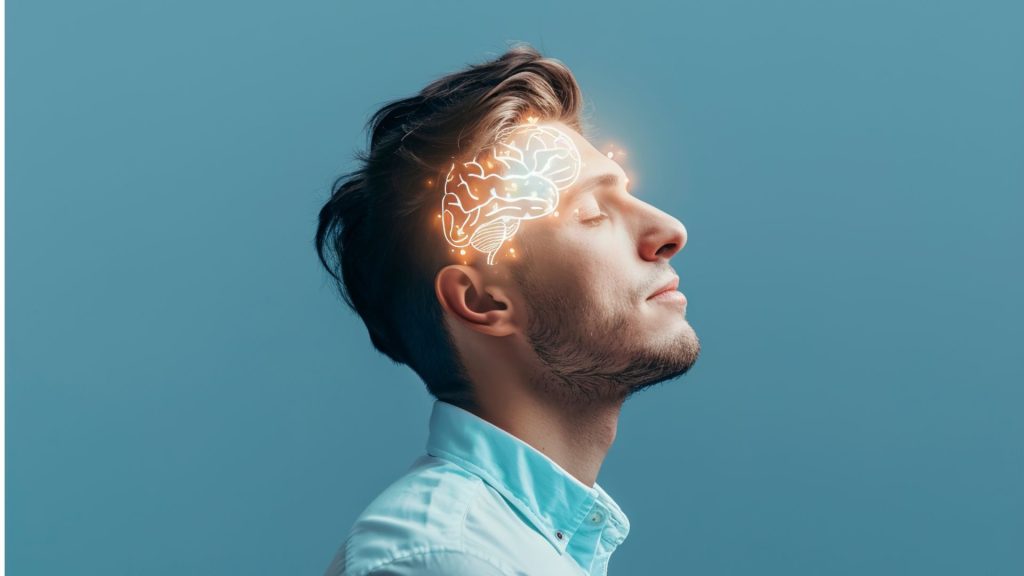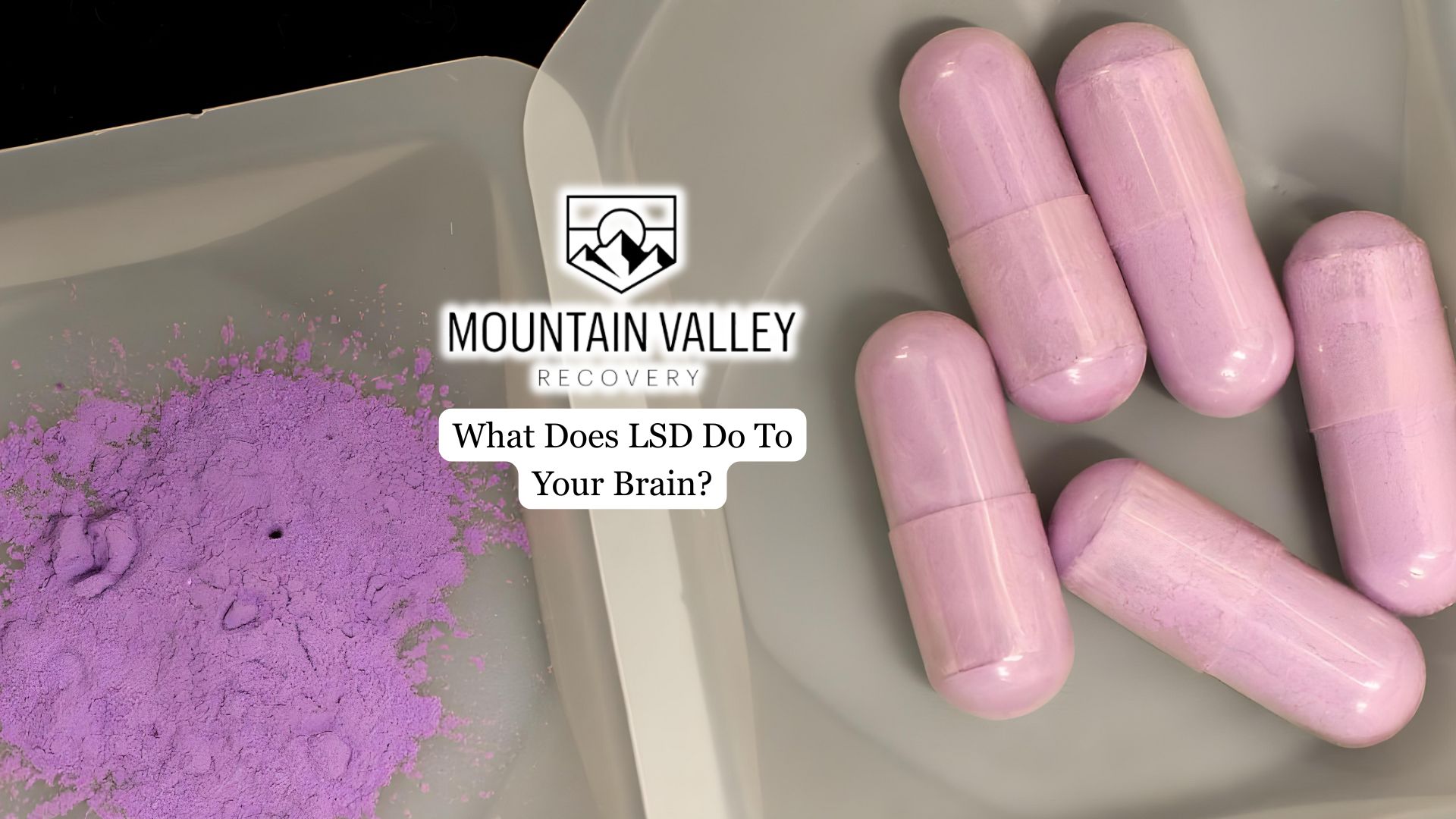LSD (lysergic acid diethylamide) is one of the most powerful psychedelic substances ever discovered. Although it’s often linked to vivid hallucinations and altered states of consciousness, its effects on the brain extend far beyond visual distortions. LSD temporarily rewires how different parts of the brain communicate, affecting mood, perception, and thought processes on a deep neurological level.
In this article, we’ll explore both the short-term and lasting effects of LSD on the brain—insight that can be vital for anyone concerned about its impact on mental health or the risk of addiction.
What is LSD?
LSD, short for lysergic acid diethylamide, is a powerful synthetic hallucinogen originally synthesized in 1938 from ergot, a fungus that grows on rye. While it was initially explored for its potential therapeutic applications, LSD gained widespread attention in the 1960s as a recreational drug closely tied to countercultural movements. It’s odorless, tasteless, and typically taken orally—often absorbed through blotter paper placed on the tongue.
Unlike substances that simply depress or stimulate the nervous system, LSD works by profoundly altering perception, mood, and consciousness. It does this by disrupting normal brain chemistry, particularly the serotonin system. In the United States, LSD is currently classified as a Schedule I substance, indicating a high potential for abuse and no accepted medical use—though ongoing research is challenging that view as evidence grows around its therapeutic potential. While LSD is not considered physically addictive, its powerful psychological effects can lead to repeated use, emotional instability, and dangerous behavior for some users.
Our men-only rehab in Holden, UT, provides targeted treatment for LSD addiction by helping clients break patterns of psychological reliance. Our approach combines evidence-based therapy, psychoeducation, and life-skills development—all within a safe, structured, and supportive environment.
Effects of LSD On The Brain
Brain Chemistry Effects
At the molecular level, LSD exerts its effects primarily by binding to serotonin receptors—specifically, the 5-HT2A receptor. Serotonin is a neurotransmitter critical for mood regulation, sensory perception, and cognition. LSD binds to these receptors more effectively than serotonin itself, triggering prolonged activation and a cascade of neurochemical changes. This heightened receptor activity disrupts the usual firing patterns of neurons, leading to altered consciousness, heightened emotions, and sensory distortions. In simpler terms, LSD acts like a chemical key that fits into the brain’s serotonin locks—unlocking unusual states of mind that feel deeply intense, unfamiliar, or even spiritual.
Changes in Brain Connectivity
One of the most fascinating findings from LSD research involves how the brain’s networks begin to interact differently. Under normal conditions, the brain has specialized networks for vision, hearing, memory, and self-awareness that operate independently. Under LSD, these networks become hyperconnected.
Brain imaging studies (using fMRI and MEG scans) show that LSD induces a globally more “entropic” brain state—meaning more spontaneous, less predictable neural activity. This interconnectedness is associated with phenomena such as synesthesia (e.g., seeing sounds or tasting colors) and the blending of inner thoughts with external perceptions.
This elevated connectivity may help explain both the sensory richness of LSD trips and the creative or spiritual insights users often report.

Cause of Hallucinations
The vivid hallucinations and visual distortions associated with LSD use are largely driven by increased activity in the visual cortex, the area of the brain that processes sight. LSD boosts blood flow and neural firing in this region, even in the absence of external visual stimuli.
At the same time, LSD reduces the brain’s ability to filter out irrelevant sensory data. This breakdown in filtering leads to an overwhelming influx of sensations and mental imagery, creating the classic “trip” experience. Combined with increased connectivity between brain regions, these visual effects can become surreal, dreamlike, or even deeply emotional
Loss of Sense of Self
One of LSD’s most distinctive effects is “ego dissolution”—a temporary breakdown of the usual boundaries between self and world. This experience is linked to disruptions in the brain’s default mode network (DMN), which is involved in self-referential thinking, personal memories, and identity.
Studies show that LSD reduces activity and internal coherence within the DMN, while increasing communication between the DMN and other brain networks. As a result, users often feel a sense of unity with their surroundings or describe experiences of “oneness” with the universe. This can be therapeutic for some, particularly when dealing with rigid thought patterns related to depression, anxiety, or trauma.
Changes the Brain Long-Term
Emerging evidence suggests that LSD doesn’t just alter brain function temporarily—it may also promote neuroplasticity, or the brain’s ability to form new connections and reorganize itself.
Animal studies and early human trials indicate that psychedelics like LSD increase the growth of dendritic spines (tiny protrusions on neurons that help form synapses), which could explain reports of long-term positive changes in mood, cognition, and personality.
Because of these findings, researchers are exploring the use of LSD and other psychedelics in treating conditions like treatment-resistant depression, PTSD, and addiction. When used in a controlled, therapeutic setting, LSD may help “reset” harmful neural patterns and promote emotional healing
Final Thoughts from Mountain Valley Recovery
LSD can dramatically alter the brain’s functioning in ways that science is only beginning to fully understand. By disrupting the sense of self and increasing connectivity between brain regions, LSD opens the door to mental states far removed from everyday consciousness. While these effects can be profound or even therapeutic under controlled conditions, they also come with serious risks—especially when used recreationally or by individuals with underlying mental health concerns.
At Mountain Valley Recovery in Utah, we offer a specialized LSD treatment program that blends clinical expertise with practical, real-life recovery tools. Our men-only rehab program, set on a fully operational ranch provides a structured yet supportive environment where clients can heal, grow, and rediscover purpose. Through a unique combination of evidence-based therapies and experiential learning—including equine therapy—we help young men build confidence, take accountability for their recovery, and develop the emotional resilience needed for long-term sobriety.





